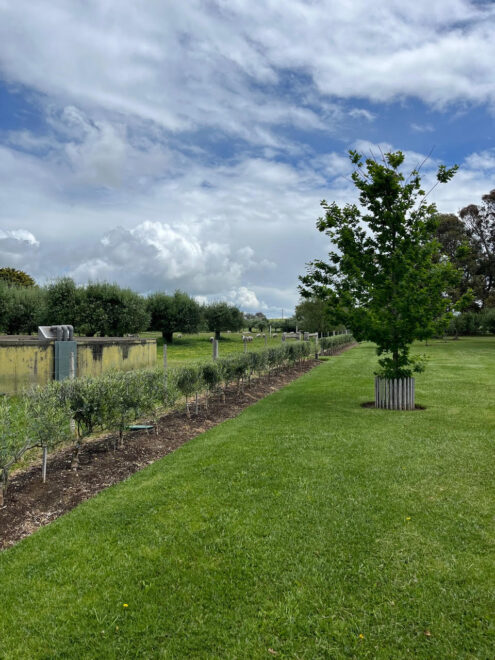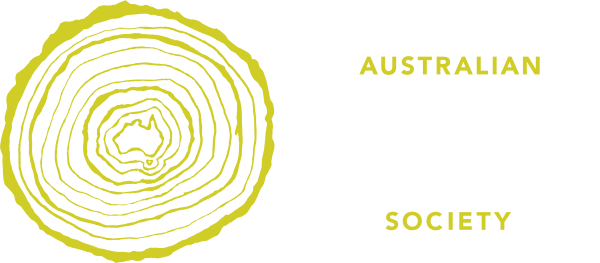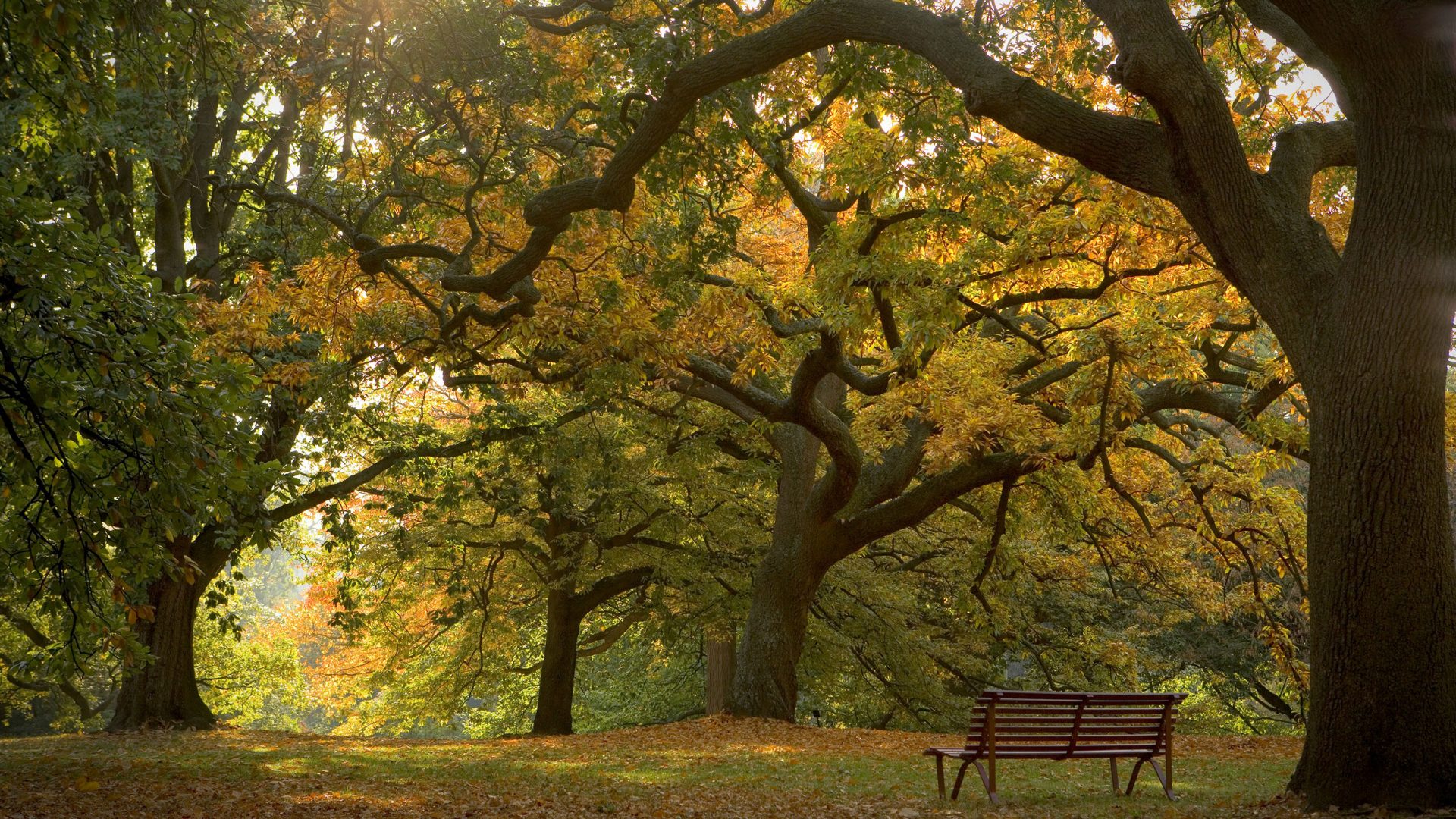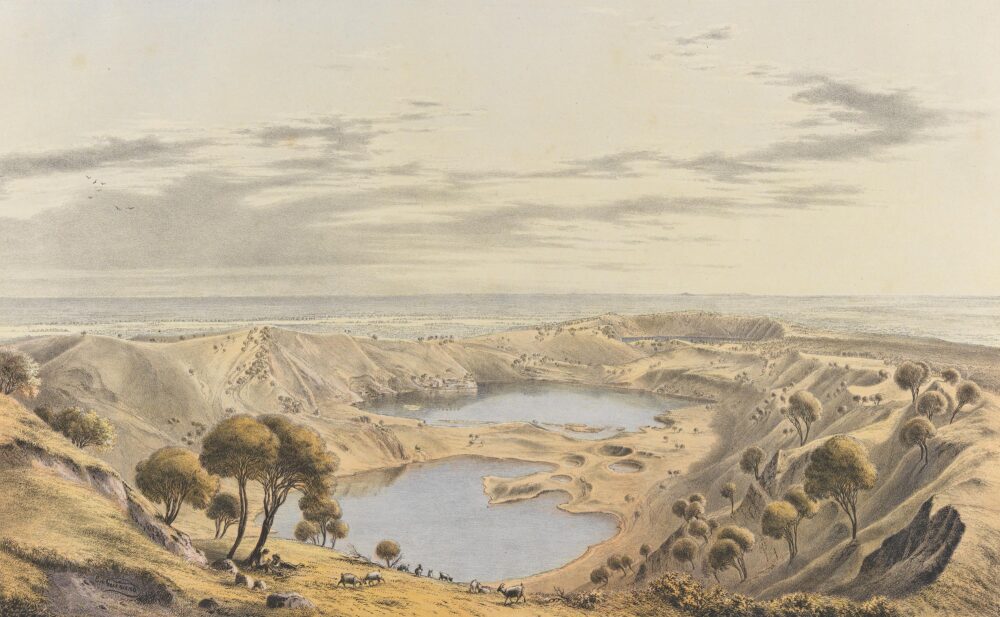Crater of Mount Gambier South Australia, 1867, plate 11 from Eugène von Guérard’s Australian Landscapes, Melbourne, 1866–68, colour lithograph, National Gallery of Victoria
Beyond the garden fence
The main theme of AGHS’s 45th annual conference, Beyond the Garden Fence, was the history of land use in southeast South Australia and resulting changes in the cultural landscape. The conference booklet sets out the program and offers short biographical notes on the speakers as well as introductions to the garden and other visits.
Below is a summary of each day of the conference.
Mayoral reception

Delegates arrived in Mount Gambier on 30 October and were welcomed at a mayoral reception by Her Worship the Mayor, Mrs Lynette Martin, OAM, herself a keen gardener and attendee at the last conference held in Mount Gambier in 1999.
To mark the occasion of the 45th conference, the AGHS South Australia Branch donated a tree to the city. The London Plane tree was presented in the garden outside City Hall.
Day one (Friday 31 October 2025)
AGHS patron Tim Entwisle opened the conference by arguing that the Society should keep its fences low and permeable to ensure it can continue its mission and excite new interest in historic gardens and cultural landscapes.
Trevor Nottle’s keynote address provoked the audience to consider how the Society can open the garden gate and invite others in, those from non-Anglo ethnic communities, for example. He also urged greater effort in creating the archive of the broad sweep of garden history.
Ian Lewis, hydrologist, cave diver and superb science communicator, explained how the Limestone Coast region was formed during 13 Ice Ages, and by volcanic activity less than 5,000 years ago.

Richard Heathcote showed six ways of perceiving the southeast that illustrated not only different attachments to the land and also advances in technology but also the geopolitics of colonialism.
And Glenys and Barry Mulligan traced the evolution of their garden at St Mary’s, near Penola, from 1937 to 2025. This proved to be a revealing backdrop to the subsequent visit to the garden.

The afternoon was taken up with visits to Umpherston Sinkhole, The Apple Farm (and now winery) and the Blue Lake, where Ian Lewis continued his explanation of the fascinating geology of the region.


Day two (1 November 2025)
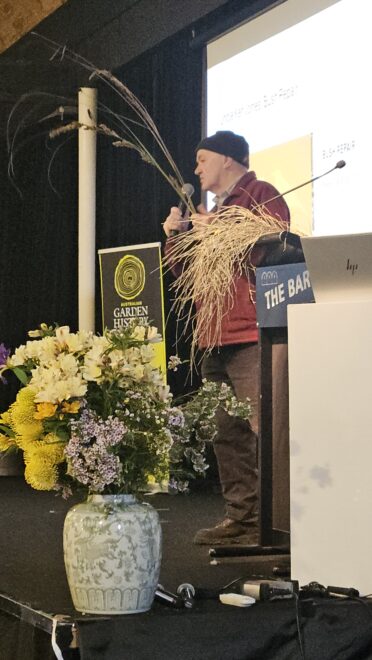 Uncle Ken Jones (photo Francesca Beddie) welcomed delegates to Boandik land, urging us all to tell our stories. His were about learning to harvest crayfish, the significance of plant and bird life in his culture and the importance of restoring the bush.
Uncle Ken Jones (photo Francesca Beddie) welcomed delegates to Boandik land, urging us all to tell our stories. His were about learning to harvest crayfish, the significance of plant and bird life in his culture and the importance of restoring the bush.
Sue Bell from Bellwether Winery offered a winemaker’s perspective on the Limestone Coast, explaining how the filtration of water through the limestone and terra rossa in the Coonawarra, as well as the Bonny upwelling created conditions for the grape growing in the region.
Jason Seidl introduced BioGro, a privately owned family company that has developed from the 1970s as a business reusing waste from the timber industry into a major organics resource recovery operation. Jason fielded a lot of questions about recycling.
Susan McCormack, Director of Carrick Hill, presented concepts for the long-awaited Museum of Gardening. The aim is to make the museum engaging for aficionados and novices alike. The first stage, featuring the Old Mole’s tool collection, is anticipated to get underway next year.
The afternoon tour went to Caroline Hills garden and vineyard, where Helen Strickland wandered around talking to visitors about all the plants she loves and how the garden grew.
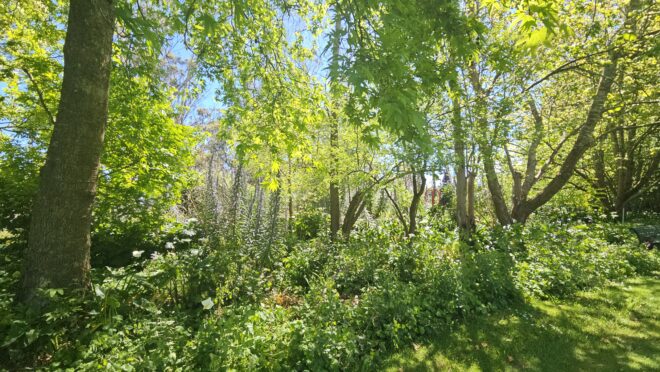
And each of three buses visited the Bio Grow composting facility and packing plant. Again, the questions flowed.

At the conference dinner, Richard Heathcote presented Lynne Walker and Richard Bird with life membership awards and a specially handmade fork. Francesca Beddie’s speech after the main course was a reflection on flowers and plants that featured during her diplomatic career, as well as the importance of authenticity in the age of AI, an eclectic bouquet.
Day three (2 November 2025)
Sunday was a full day of travel around the Limestone Coast region. The morning tea stop for some was at the Millicent wetlands, Lake McIntyre, where we were greeted by enthusiastic members of the nearby garden club and the sound of birds and frogs.
Trevor Nottle’s account of his day gives you the flavour of the outing:
Petticoat Lane in Penola (State Heritage Listed and looked after by the National Trust) is where Saint Mary Mackillop taught and riled up the Roman Catholic leadership with her determined ways and persistent questioning. Great little cottage gardens there too.
St Mary’s Winery and Garden well outside Penola is beautifully presented by owners Glenys and Barry Mulligan – brilliant dry-stone walls encircle the gardens, lavish plantings of roses, perennials, irises in perfect condition and full bloom, and an ambitious tree planting project. My favourite garden and the wine is great too.

St Marys garden, Penola, photo Francesca Beddie
A visit to Yallum Park proved a highlight as the place has been given a new lease of life by a young couple from the family taking over day to day operations. The ancient trees, planted around 1914, have been attended by an arborist who has treated them very professional. The huge bushes of old roses have been thinned out and dead wood removed. The results have been plenty of new growth and lots of flowers. A monster of a plane tree dominates a corner of the 10-acre garden away from the house; its full spread making a magnificent canopy and enough summer shade for a large family gathering to sit in the cool.

The Holla-Fresh herb ‘farm’ at Tantanoola was an eye-opener with acres of one and two storey greenhouses, poly-tunnels and glasshouses that turn out nearly 200,00 units of fresh herbs every week supplying Coles, Woolies and independent supermarkets in South Australia.
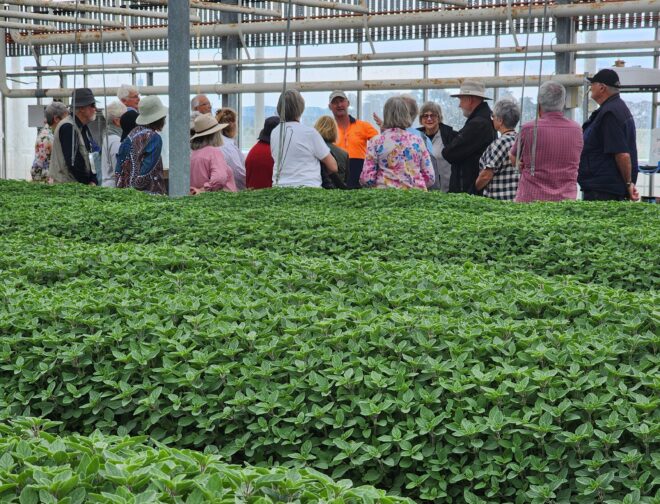
Thinking about our trip afterward I concluded that only one garden we visited was truly private, and even it could be booked for visits. The rest were all attached as decorative features to other tourist attractions: two reception and events venues, two wineries, one with a wedding venue attached, two sightseeing places for tourists, one large park featuring an extinct volcano and a cactus garden. The idea struck me that these private-public gardens and more like them could be the future of gardening in an era when private home gardens are becoming much, much smaller, or are disappearing altogether.
And in between
The AGM (1 November 2025)

Books launched and sold
Max Bourke launched The man who planted Canberra during the mayoral reception. Publication of the book by Robert Macklin was supported by Max and Margie Bourke as well as AGHS’s Kindred Spirits Fund.

Plus much conviviality and magnificent blooms!
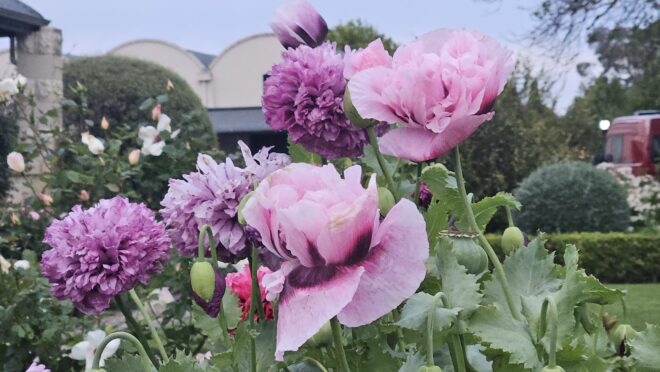
Thank you to the AGHS SA conference committee, led by Dot Evans, as well as the other committee members, Mike Evans, Richard Heathcote, Jeff Jenkinson, Anne McCutcheon, Di Wilkins, Susan Woodburn, and volunteer John Woodburn!
As well as a pre-conference tour via Robe and optional day to the Naracoorte region

Kingston on the Limestone Coast is the crayfish capital of South Australia, photo Stuart Read
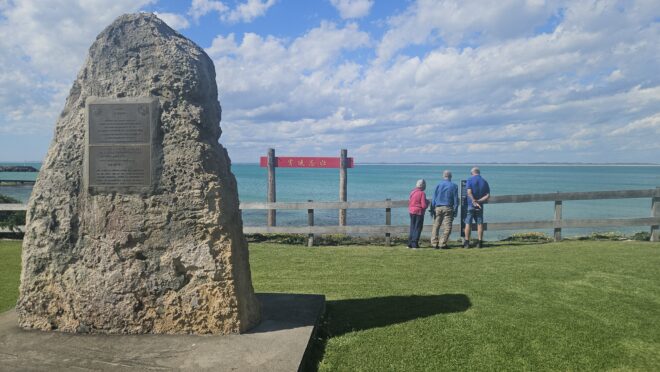
And on Monday 3 November two buses headed to the Naracoorte region to visit the World Heritage listed Naracoorte Caves National Park. Travellers had a break at the National Trust Sheep’s Back Museum before or after lunch-with-local wine at Gum Park, and despite the rain, a walk among the old trees planted by the current owners’ grandfather and glorious roses planted by the current owners. Again SA Branch members, Richard Heathcote, Di Wilkins and Jeff Jenkinson ably shepherded their AGHS flocks.
